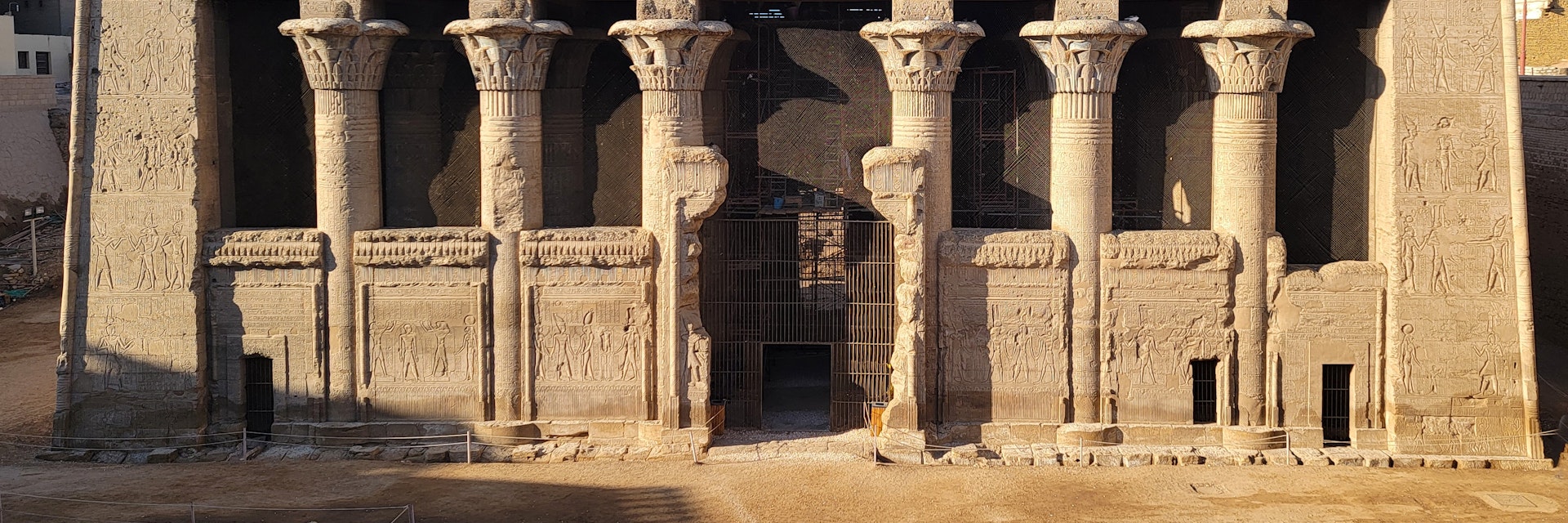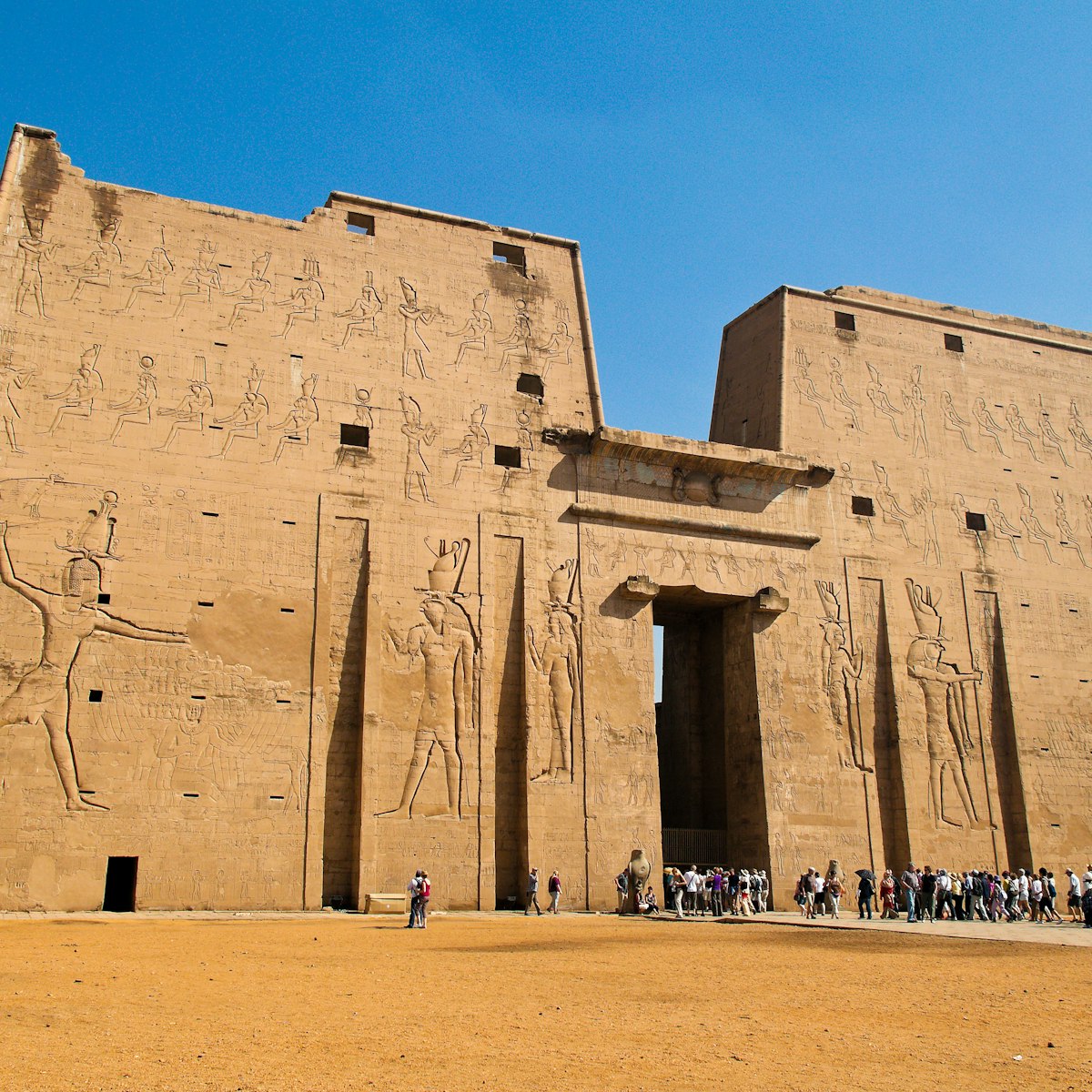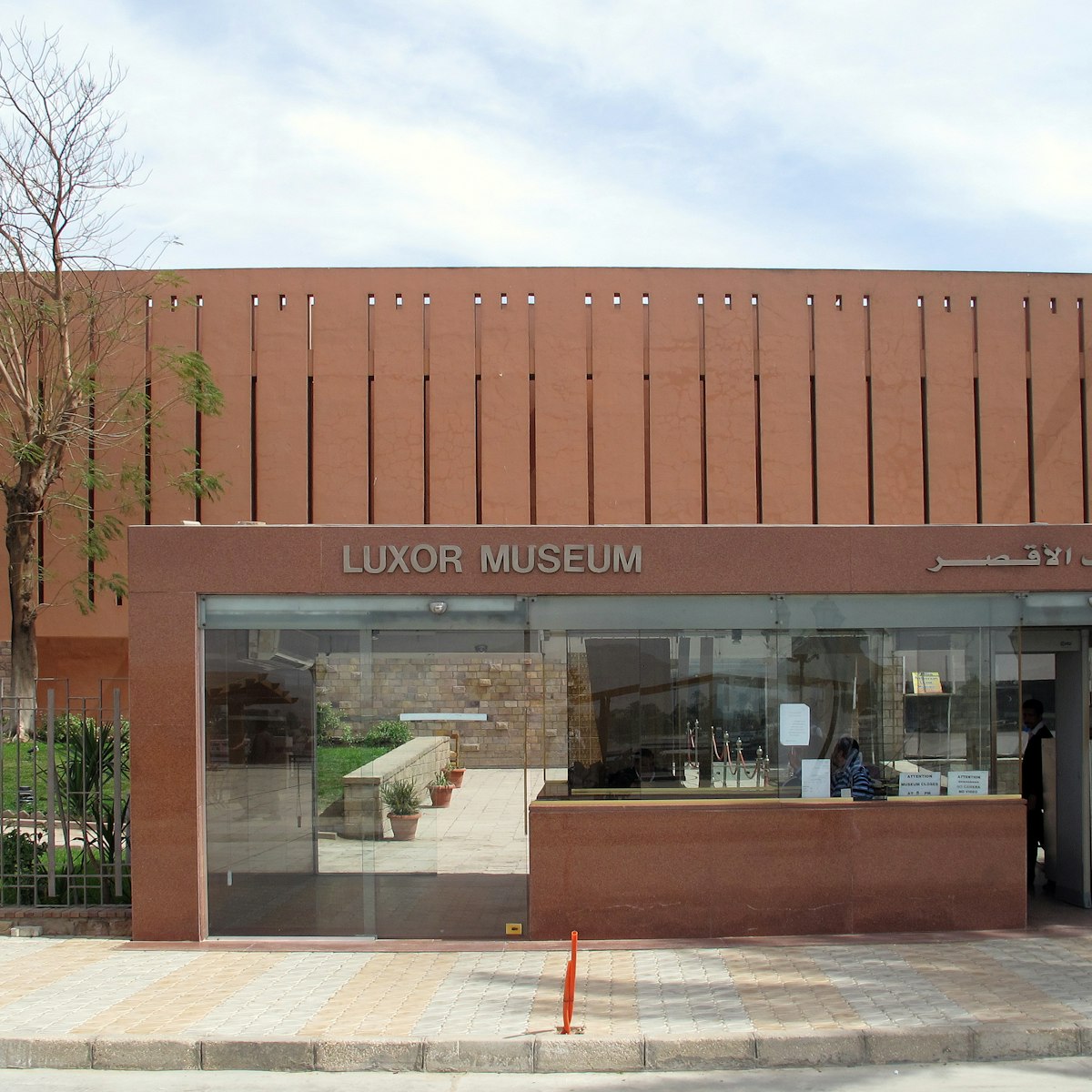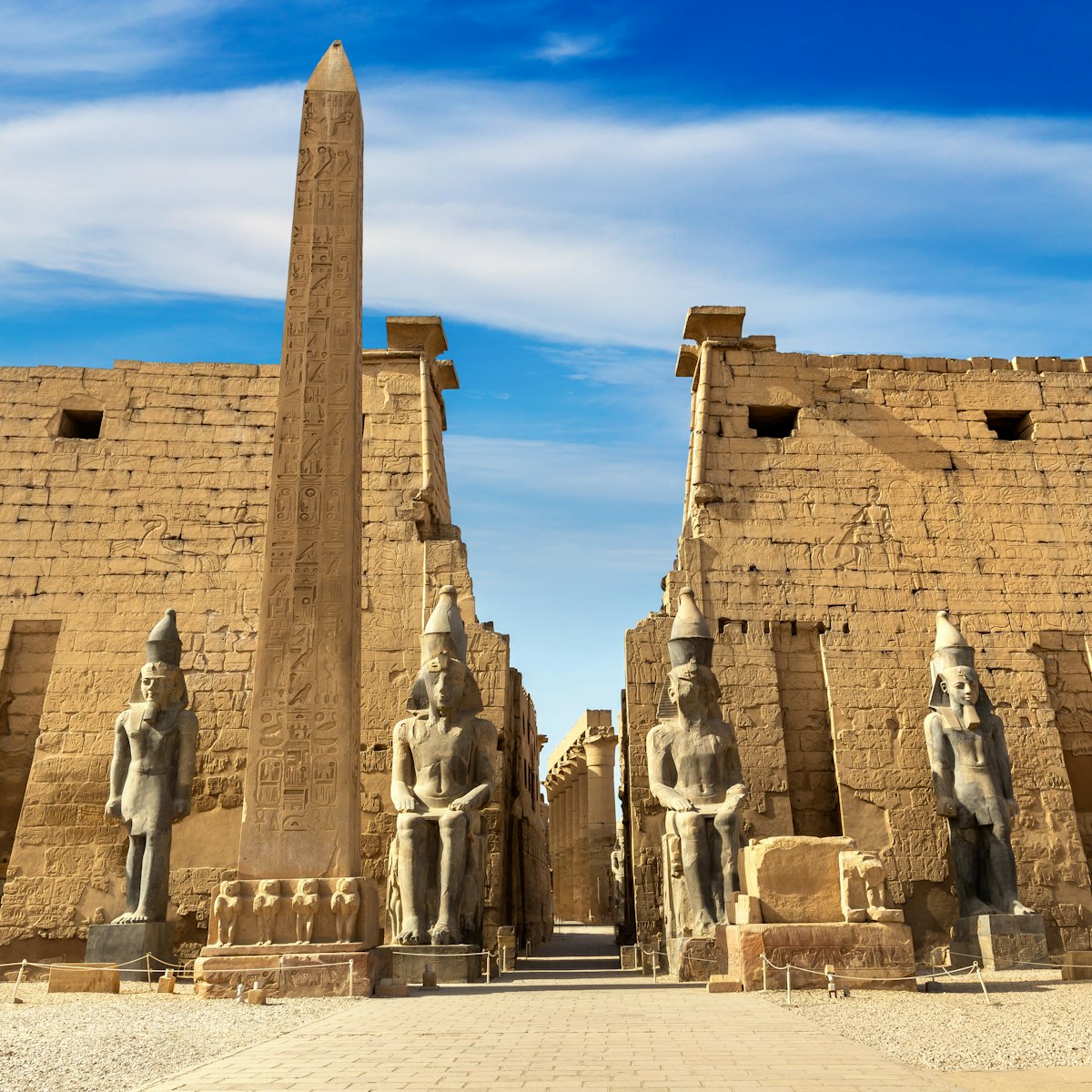Construction of the Temple of Khnum, the ram-headed creator god who fashioned humankind on his potter’s wheel, was begun by Ptolemy VI Philometor (180–45 BC). The Romans added the hypostyle hall, the only part of the temple that is excavated and can be visited today, with well-preserved carvings from as late as the 3rd century AD.
The Temple of Khnum today sits in a 9m-deep pit, which represents 15 centuries of desert sand and debris, accumulated since it was abandoned during the Roman period. Most of the temple, similar in size to the temples of Edfu and Dendara, is still covered by the old town of Esna. A quay connecting the temple to the Nile was built by Roman emperor Marcus Aurelius (AD 161–180).
The central doorway leads into the dark, atmospheric vestibule, where the roof is supported by 18 columns with wonderfully varied floral capitals in the form of palm leaves, lotus buds and papyrus fans; some also have bunches of grapes, a distinctive Roman touch. The roof is decorated with astronomical scenes, while the pillars are covered with hieroglyphic accounts of temple rituals. Inside the front corners, beside the smaller doorways, are two hymns to Khnum. The first is a morning hymn to awaken Khnum in his shrine; the second is a wonderful ‘hymn of creation’ that acknowledges him as creator of all, even foreigners: ‘All are formed on his potter’s wheel, their speech different in every region but the lord of the wheel is their father too.’
On the walls, Roman emperors dressed as pharaohs make offerings to the local gods of Esna. The northern wall has scenes of Emperor Commodus catching fish in a papyrus thicket with the god Khnum and, next to this, presenting the temple to the god.
The back wall, to the northeast, constructed during the Ptolemaic period, features reliefs of two Ptolemaic pharaohs, Ptolemy VI Philometor and Ptolemy VIII Euergetes (170–116 BC). A number of Roman emperors, including Septimus Severus, Caracalla and Geta, added their names near the hall’s rear gateway. Outside, an underground pump struggles to move groundwater away from the structure.
The Temple of Khnum is situated about 200m from the boat landing, at the end of the tourist souq. Buy tickets at the Temple Ticket Office.




